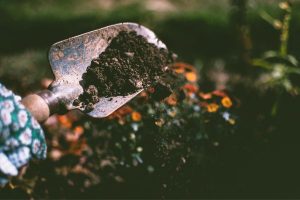 Soil! Does it sound fascinating to you?
Soil! Does it sound fascinating to you?
Maybe it should. We take our soil for granted. We even call it “dirt”. But soil is actually pretty magical.
It is full of wonderful living microorganisms. They are microscopic, so we can’t see them, but they are there. A teaspoon of good soil can hold up to one billion bacteria, several thousand nematodes and several yards of fungal filaments, according to Kathy Merrifield, a retired nematologist at Oregon State University. And those microorganisms are considered to be good guys, even though we might think first of their bad-guy relatives.
Remember, soil is the home of your plant roots. If there is plenty of organic matter in your soil, the roots can more easily hold onto water, fight off diseases and pests, grab the nutrients that are there, and grow into healthy, vigorous plants. Healthy plants=happy gardeners! And in this case, a healthy environment.
“A teaspoon of good soil can hold up to one billion bacteria, several thousand nematodes and several yards of fungal filaments.”
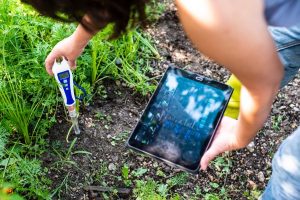 The Soil Jungle
The Soil Jungle
Good bacteria are the largest group of the soil jungle and there are many kinds. Some of them convert the nitrogen in the air to a useable form, in a process known as nitrogen fixation. Actinomycetes give earth that fragrance released when it rains.
We’ve discovered a lot about fungi in the last 20 years or so. Mycorrhizae are the root like filaments that form a relationship with plant roots and increase plants’ ability to take up nutrients. They also help move the nutrients around from plant to plant. They help hold onto the soil particles and reduce erosion, which is important in our sandy Florida soils. The less you disturb your soil when planting, the less you will break up the fungal networks in your soil communities.
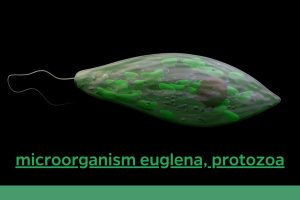 Protozoa
Protozoa
Protozoa are microscopic animals that are great fun to look at under a microscope. The single celled organisms feed on tiny organisms, releasing nitrogen which makes it accessible to the plants. Without their intermediary action, some nitrogen might be trapped in the dead plant tissue. Although they are single celled, they move along very well with a little moisture in the soil. Nitrogen is a key element to plant growth.
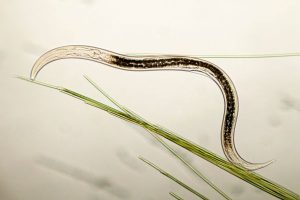
Nematodes
Nematodes – we gardeners immediately think of pests like the root knot nematodes that weaken our plants. But some nematodes actually eat other nematodes or other small creatures. They are part of a huge family of microorganisms and on every continent.Earthworms
Earthworms are the creatures we think of as our friends in the garden. Aerators of the soil, creators of worm castings, they make channels for roots and water runoff and air movement. They leave behind rich soil. It’s no secret that earthworms are a gardener’s best friend.Treasure Hunt
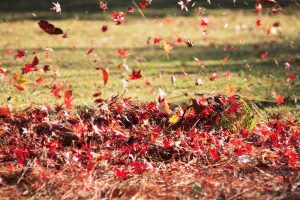 So where do Florida gardeners find all these treasures? If you have a yard, it is in those falling leaves and pine straw. As fall approaches, the tree or shrub pulls out as much of the sugar and starch it has made as possible and stores the nutrients in the plant roots. That energy will be used to start growing when the weather warms in the spring. All the leftover organic material falls to the ground as leaves for you to gather and use as mulch.
Gather it up and use it in your plant beds. It will blow around easily, so cover it with a thin layer of pine bark mulch or pine straw depending on the plants in the bed. Tender annuals and vegetables might get pine straw because their stems are tender. Pine straw is less abrasive when it is windy than bark chunks.
These falling leaves are nutrients returning to the ground. It’s a great circle and we gardeners can help keep it spinning. Watch your garden flourish!
So where do Florida gardeners find all these treasures? If you have a yard, it is in those falling leaves and pine straw. As fall approaches, the tree or shrub pulls out as much of the sugar and starch it has made as possible and stores the nutrients in the plant roots. That energy will be used to start growing when the weather warms in the spring. All the leftover organic material falls to the ground as leaves for you to gather and use as mulch.
Gather it up and use it in your plant beds. It will blow around easily, so cover it with a thin layer of pine bark mulch or pine straw depending on the plants in the bed. Tender annuals and vegetables might get pine straw because their stems are tender. Pine straw is less abrasive when it is windy than bark chunks.
These falling leaves are nutrients returning to the ground. It’s a great circle and we gardeners can help keep it spinning. Watch your garden flourish!
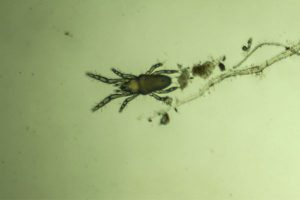
by Duval MGV
Source: UF/IFAS Pest Alert
Note: All images and contents are the property of UF/IFAS.
Related Posts
News & Updates September 11, 2023



